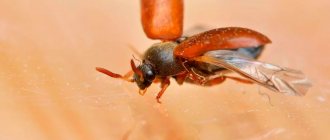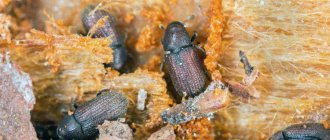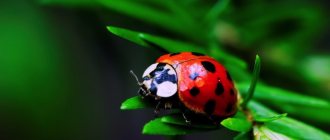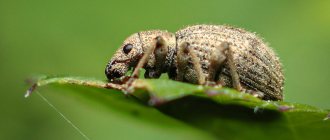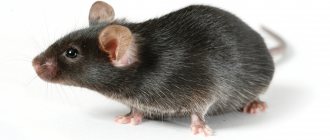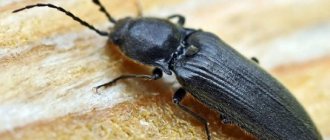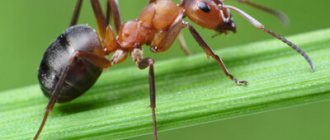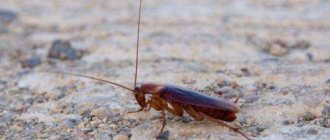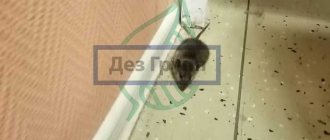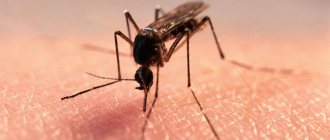The most popular pets are cats and dogs. Many people keep other animals at home: parrots, rabbits, hamsters, fish. But domestic insects are truly rare pets. So if you want to have an exotic animal that also won’t require a lot of attention, pay attention to insects. The insect pet is suitable for busy people, nature lovers, as well as children.
The most famous domestic insect is the bee. However, keeping bees in a house or apartment is a bad idea. If you like these particular insects, then you will need a hive and a place where you can put it. It is desirable that this be a private house or cottage. Contact with bees is not advisable for children, since their stings are painful, and allergies to bee venom are very common.
But there are other types of pet insects, and most of them are completely safe for children. By observing insects in the insectarium, the child will cease to be afraid of them, gain self-confidence, and will become calm and understanding about the nature and characteristics of the life cycle of animals. It’s also extremely interesting to watch how domestic insects move, sleep, eat, and communicate with each other!
Let's figure out what types of insects and arthropods are suitable for keeping at home, what conditions they need, and what these unusual pets eat.
Popular insects as pets
Insects and arthropods, even the most peaceful ones, should not be kept just in the house. You will need an insectarium. This is usually a glass or plastic container with a lid and holes or inserts for ventilation. For some insects, such as ants, special farms are sold. Also find out in advance what conditions the animals need: humidity, food, shelter, etc. We will try to help you with this.
stick insect
The stick insect is an interesting insect that grows up to 10-15 cm in length, and with this size it is perfectly camouflaged among branches and leaves. The game “find the stick insect” will be a fun activity for your child.
Living conditions are quite easy to create. For one individual, you need to allocate a space of at least 15x15x30 cm. If there is not enough space, then insects can fight for territory. During the day, the temperature must be maintained at +25-27 °C, at night - not lower than +18 °C. Coconut fiber or shavings, peat, or special purified sand can be used as bedding in the insectarium. Of course, there must be branches and sticks among which insects can move and find shelter. You can put living plants in the container that are not poisonous to pets.
It is easy to provide food for stick insects. Green leaves of any fruit trees and shrubs are suitable for this: apple trees, rose hips, currants, plums, etc.
Mantises
The praying mantis is a predatory insect. Many people know that the female praying mantis eats the male after mating. However, this is not entirely true; with a large amount of food, the male is not in danger.
The temperature in the insectarium should be room temperature, +23-25 °C. To maintain humidity, you need to lightly spray the terrarium with clean, settled water 1-2 times a day. You cannot place the container with the praying mantis in direct sunlight, but the place must be sufficiently lit.
The minimum size of an insectarium or terrarium for a praying mantis is 20x20x20 cm. It is recommended to use crushed dry leaves of birch and oak as soil; coconut substrate is also suitable.
Mantises need to be fed with live food: flies, crickets, cockroaches, beetles. It must be purchased at a pet store. Insects from the street can be infected with bacteria, fungi or mites, which are deadly to praying mantises.
Information for beginners
If you are a novice entamologist, start breeding insects from representatives of the fauna of our region. These can be flying insects that are well adapted to local climatic and natural conditions and provide useful products, for example, butterflies or bees.
Beneficial flying insects of our region are bees.
The honey bee has another name - “apis melifera”. There is nothing unusual in her appearance, but in terms of productivity it is difficult to find equals for her. These flying chemical laboratories provide people with a lot of unique substances that have healing and valuable properties.
Here are just some of the useful waste products of bees:
- propolis;
- wax;
- beebread;
- royal jelly;
- honey, etc.
Some product names are found in books on traditional medicine, others in manuals for fortune telling and magical manipulations, and there are those that are used in everyday life and at work.
Madagascar hissing cockroaches
If you were afraid of cockroaches and other insects, then with the appearance of such a pet, all fears will be a thing of the past. The Madagascar cockroach is simply gigantic, the insect is about 6 cm long! And he can also hiss scary! Otherwise, this is a peaceful, harmless insect that will happily sit on your hand and feast on treats.
The temperature in the insectarium for these animals should be within +25-30 °C. Every other day, the “house” of cockroaches should be sprayed with water. The insectarium should be installed away from the window, since Madagascar cockroaches are nocturnal animals and do not like bright light. They must also have shelter. Sand, dry leaves, paper, coconut substrate can be used as soil.
You can feed cockroaches fruits, vegetables, berries, and not necessarily fresh ones - they eat everything. You will also need to install a small container of water in the insectarium and update it regularly.
Swimmers
These are aquatic beetles with a streamlined body. The head, chest and abdomen of the animal are tightly articulated. The swimmer has strong jaws and long thread-like antennae. The beetle's eyes are located on the sides of the head. The color of the insect's body parts is different: the upper side is brown, black or green, the lower side is yellow. Animals have wings. They make long flights at night. The back pair of legs helps swimmers move along the surface of the water.
Such insects easily live and reproduce in captivity. Pets are not picky about the state of water and lighting. The swimmers are kept in an aquarium with soil, stones and plants. Beetles feed on protein foods: insect pupae, meat, fish.
Beetles
At home you can keep rhinoceros beetle, goliath, and other species. The conditions for them are approximately the same. The dimensions of the terrarium or insectarium should be at least 50x50 cm, at the bottom there should be a layer of litter about 4 cm, and pieces of wood, driftwood should be placed on it, or a rather thick branch should be installed vertically, along which the beetles can move. For such insects, room temperature and moderate humidity are suitable.
The specifics of the menu need to be clarified in each specific case, but most beetles can be fed with fruits, vegetables, leaves and plant juice.
Conclusion
Various parasitic insects can live in an apartment or house. They make a person's life unbearable. Discomfort, pain, lack of sleep and constant stress - these are the consequences of living with such insects under the same roof. In addition, do not forget that most of them are carriers of dangerous infectious diseases.
You can try to fight parasites yourself. Some of them can be quickly removed from their homes. And in the fight against some, you will have to use the services of SES specialists. They use high-quality, concentrated insecticides that are guaranteed to kill pests in your home.
Ants
Ants are pet insects that have nothing in common with those that sometimes appear in the house and cause a lot of inconvenience. Ants should be purchased directly from a special farm. The upper part of the farm is transparent, so you can watch the life of the insect colony for hours.
Ants need high humidity, so do not forget to regularly wet the base of the farm and arrange a “watering hole” - place cotton wool soaked in water in a certain place. You should also always maintain cleanliness, remove food uneaten by ants, and wash the food tray.
Ants need to be fed a variety of foods. Suitable for them:
- insects;
- corn;
- fruits and berries;
- sweet natural syrups and juices.
Don’t forget to provide the ant with “building materials”: small pebbles, sand, and crushed bark. It is very interesting to watch how they build themselves “barricades”, “houses”, “corridors”.
 Hermit crabs
Hermit crabs
Hermit crabs live in mollusk shells and, as they grow, change their homes to larger ones. The largest species can live from 30 to 70 years and even more. They are excellent climbers and diggers and are interesting to watch.
Some types of hermit crabs live underwater, others live on land. Most aquatic species live in salt water, while those that live on land must travel to the sea to reproduce.
These animals come in a variety of colors, such as red, brown, or purple, and have a variety of body patterns, including specks, spots, or stripes. They are omnivores, either scavenging or eating dead animals or plants.
Hermit crabs are popular pets. They need free space, a certain substrate, fresh or salt water, food, additional shells and some objects on which they can climb. If you want your pet cancer to feel good, you should take into account all the nuances.
Labiopods
Arthropods, which include various centipedes, cause fear to many. However, these animals can also be fun pets. You can keep several types of centipedes as pets, which are sold in pet stores. It is not worth catching in the wild - the animal may be poisonous.
Centipedes live at room temperature and like to dig holes, so make sure there is enough coconut substrate in the insectarium. Also, branches, leaves, and snags will not hurt, among which arthropods will arrange shelters for themselves. Most centipedes are carnivores and will need to feed on insects.
Locust
You can keep several types of locusts at home:
- green Guyanese;
- rainbow;
- foamy.
This is an unpretentious insect that feels great at room temperature and moderate humidity. The size of the insectarium depends on how many insects live in it.
Feeding locusts is easy. Green lawn grass and the greens of any cereals are suitable for her. You can treat the locusts with sprouted wheat, rye and other cereal plants.
Crickets
The chirping of these insects has a calming effect on many, which is why they are most often kept at home. However, unfortunately, the lifespan of these insects is short - about 2 months. They are undemanding when it comes to temperature, but the air must be fairly dry.
Crickets can eat a wide variety of foods:
- fresh herbs, lettuce and tops;
- fresh vegetables and fruits;
- oatmeal "Hercules" (uncooked);
- powdered milk;
- dry food for cats and dogs;
- Gammarus.
Mealworms
If you are looking for the perfect pet that does not require special care, then the worm is just for you. Some American psychologists say mealworms provide more sensory activity for children. Holding a bunch of writhing and swaying mealworms in your hands, you will feel something between your fingers that you have never felt before.
When kept at home, mealworms only need a bed of oats and a couple of pieces of fresh vegetables to be happy. They will get water from vegetables and eat oats, and all their owner needs to do is change the oat bed every week.
Medvedki
This insect, with its unusual appearance, makes one think of space aliens. If you want to have such an “alien” 6-7 cm long at home, you will need an insectarium with a base size of at least 50x50 cm. Since the mole cricket lives in the ground, the soil layer should be at least 10-15 cm. The soil must be sprayed once a day settled water.
You can feed the mole cricket with root vegetables, plant tubers, and white bread crumbs. Take care of the metal mesh lid. Air flow into the insectarium is necessary, but the insect will easily tear the fabric.
Spider tarantula
This is the type of domestic insect that should not be given to children. Tarantulas are hunters; all types of tarantulas are poisonous, so you need to handle them carefully and know when they are safe. The toxicity and potency of tarantula venom depend on the gender and age of the insect, the time of year and a number of other factors. The poison can cause swelling, dizziness, nausea, and an allergic reaction.
But watching furry hunters is very interesting. These are large insects, the size of which can, depending on the species, reach 3-7 cm. The color of the spider’s “fur” varies, from almost black to reddish, gray, sand.
Tarantulas do not weave webs, they live in burrows, so make sure that the insectarium has a thick layer of soil. You can use orchid substrate as soil. The size of the bottom of the insectarium is at least 50x50 cm. In the insectarium you can place shelters and driftwood branches, among which the tarantula will move, hide and hunt.
Young spiders need to be fed once every 2-3 weeks, adults over 3 years old - once every 1.5-2 months. Tarantulas eat live crickets, insect larvae, and cockroaches.
Parasitic wasp (rider)
0
Source:
They are primarily parasitoids of other animals, mainly other arthropods. Many of them, such as the Braconidae family and Trichogramma, are beneficial to humans because they regulate the number of agricultural pests. Ichneumon wasps differ from ordinary wasps in the absence of a sting as such; it is replaced by an ovipositor. Nevertheless, in the English-language literature, parasitic wasps are usually called parasitic wasps. With the help of an ovipositor, parasites lay eggs in the body of larvae (caterpillars) or in the eggs of their victims. The prey consists mainly of larger insects, such as butterfly caterpillars, beetle larvae, and other arthropods, including some species of spiders. The rider typically positions himself over the victim (like a rider on a horse, hence the name) and inserts the ovipositor. The wasp larvae hatch inside the victim and feed on their organs, gradually destroying them. Species of the genus Megarhyssa of the superfamily Ichneumonidae have a thin ovipositor several centimeters long, used for penetration into tree trunks. Fortunately, people are not considered suitable incubators for wasp babies and it does not lay larvae in humans.
Silkworm
The silkworm has long been known to the peoples of Asia as a source of valuable fiber, from which they make an expensive and beautiful material - silk. However, the life cycle of the silkworm is very interesting to observe, which is why butterflies are increasingly kept as pets. Children especially love them. After all, something changes in the insectarium every day.
The hairy, almost white butterflies do not live long, about 10 days, and do not feed during their life. But tiny larvae emerge from the laid eggs, and they grow literally before our eyes. The main thing is to provide them with enough food. The larvae eat mulberry (mulberry) leaves and do not refuse to gnaw on anchar, figs, and ficus. Given suitable conditions and good nutrition, you can observe the life of insects and their magical transformations for a long time.
Name and meaning of the most common insects
ladybugs
Small and fast bugs have different colors of the body and the color of the dots. Representatives of all 70 species exterminate different types of aphids and other pests. Our ancestors also drew attention to the fact that where there are a lot of these cute bugs, the harvest will be excellent.
Ladybugs in the photo.
Gallica
Aphidamiza (pictured below), unlike pear galitsa, does not spoil the leaves, but, on the contrary, by poisoning the aphids with a poisonous liquid during a bite, it destroys them. The larvae that feed on it grow and develop, and over time, falling to the ground, they become cocoons.
Spiders
Spiders are different, but they all help people fight different types of pests.
Ground beetles
Ground beetles (photo below) and their larvae eat the eggs of wireworms and other parasites, but when pesticides are added to the soil, these “garden orderlies” immediately die. Comfortable conditions for them are foliage, sawdust, piles of stones or simply open ground.
When should you not keep an insect as a pet?
First of all, you need to understand whether you can provide living conditions for your pet insect and safety - both for yourself and for him. If there are animals in the house that can hunt insects and cause them harm, you should not have spider bugs.
Also, you should not choose a pet insect if you are allergic to the substrate, bites, food for this type of animal.
Insects are contraindicated in a house with small children, who can independently begin to “get to know” the pet and, as a result, get injured.
In general, insects are wonderful pets, unpretentious, exotic, and usually harmless. Therefore, if you need just such an animal in your house, choose an insect to suit your taste.
Dark winged mosquito
0
Source:
The main harm is that they squeak and interfere with sleep! Thank God, humanity has invented many ways to get rid of mosquitoes. Mosquito nets, repellents and fumigators are a whole industry. Place fresh branches of elderberry, bird cherry, Caucasian chamomile or basil in the rooms, and place a container with tomato seedlings or geranium in a pot under the windows and on the balcony. Mosquitoes do not like the smell of these plants, so they will want to leave your home as soon as possible. According to folk superstitions, these small, disgustingly buzzing bloodsuckers - mosquitoes - are capable of bringing not only absolute harm, but also benefit, predicting the weather and future events. Clouds of mosquitoes mean good weather tomorrow. Painful mosquito bites and especially active buzzing of bloodsuckers - foretells imminent bad weather and night rain.
